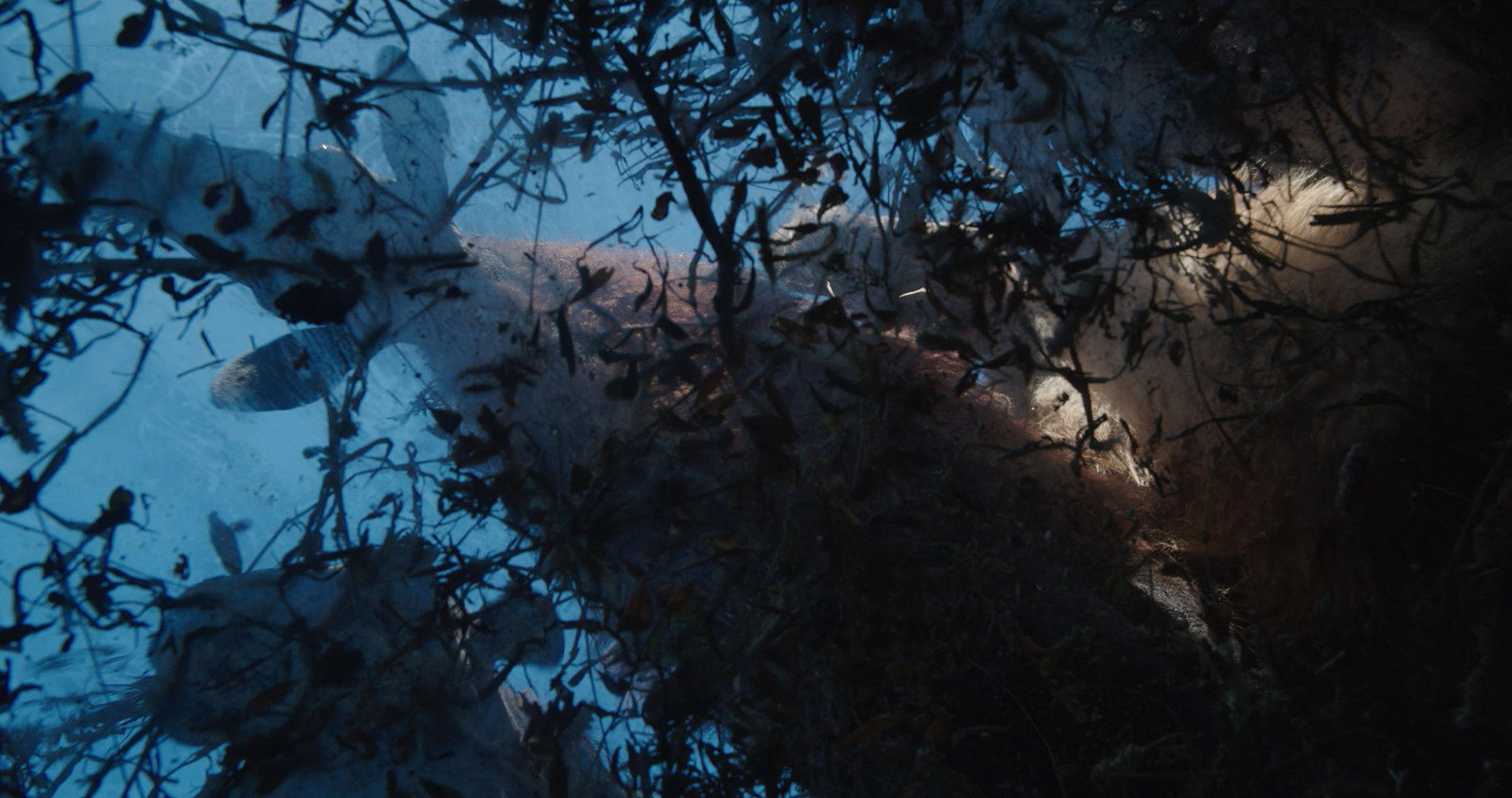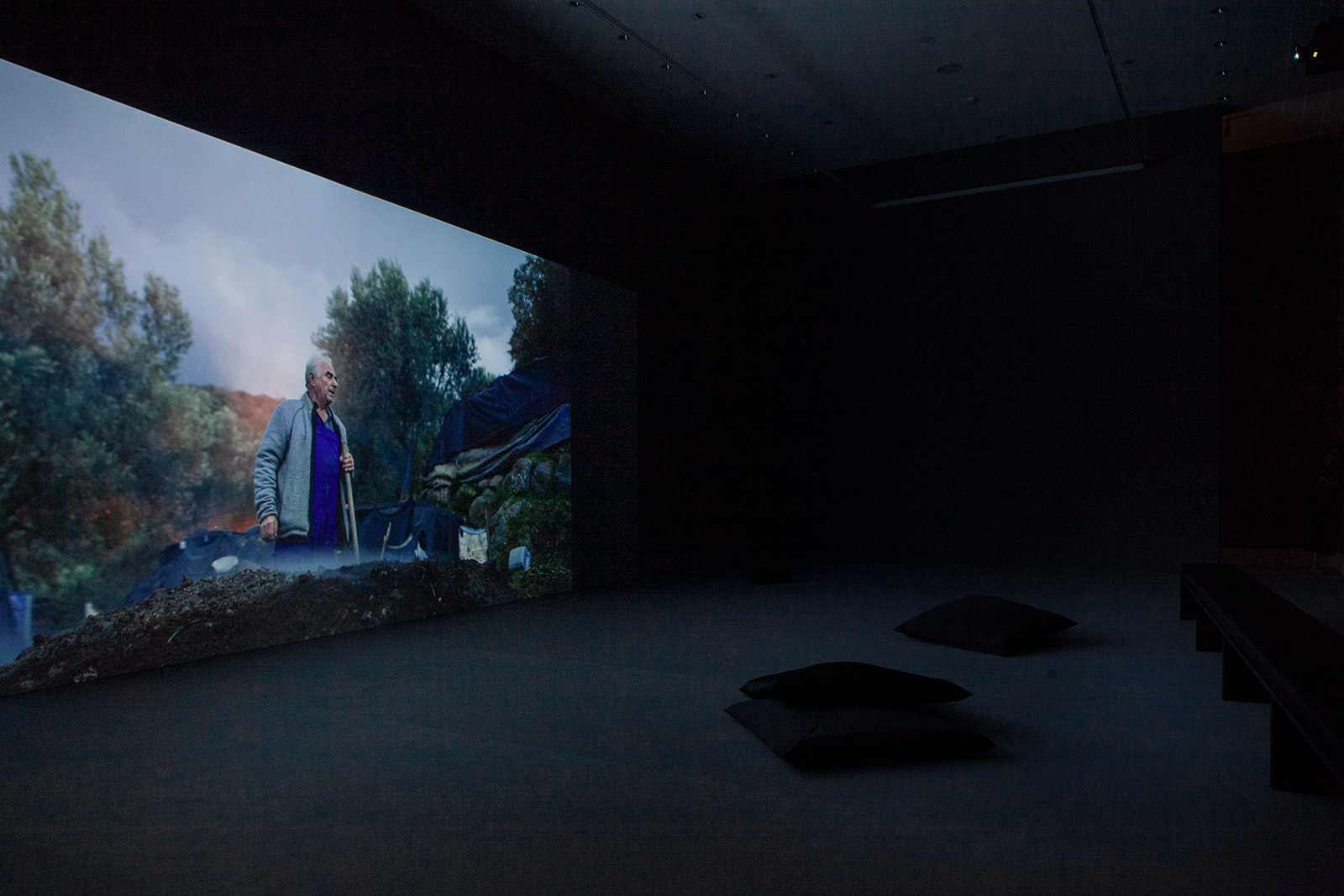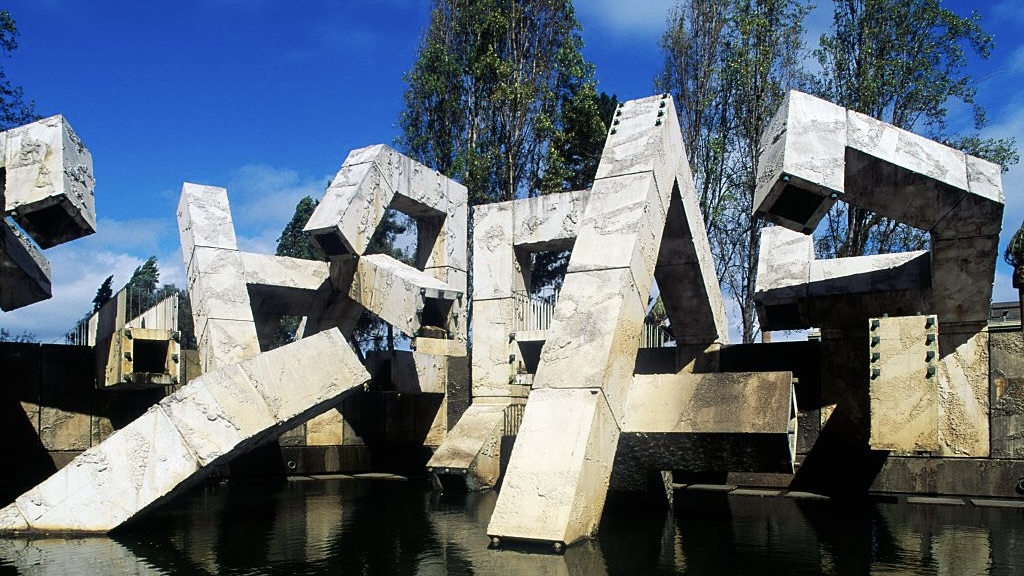Wu Tsang’s radical approach to fiction and truth takes centre stage at Gropius Bau
The American artist’s yearlong residency at the Berlin institution culminates with a major survey of her filmmaking and sculptural practice

In his 1990 book Poetics of Relations, Martinican philosopher and poet Édouard Glissant famously argued for the ‘right to opacity for everyone’, as an ethical stance against imperial conquest. This notion is central to the practice of American artist Wu Tsang, as manifested across the moving image and glass-based works featured in a new major exhibition, opened at Gropius Bau. Entitled ‘There is no nonviolent way to look at somebody’, it spans seven rooms, incorporating film, sculpture, text and sound and is the result of a yearlong residency at the Berlin institution – the first of its kind.
‘I am working with transparency and opacity as metaphors for language,’ says Tsang of her site-specific, blue stained glass windows Sustained Glass. Words are etched into the pane using acid, forming an overlapping text that fades in and out of legibility. Responding to the proportions of the 19th-century, neo-Renaissance building, the sculpture inverts the tradition of stained glass windows, depicting allegorical stories through images. ‘The glass is literally shaped by the mouth and by breathing,’ Tsang says of the medieval hand-blown technique, perfected in Bavaria, ‘which makes a very physical connection to the voice.’


Stills from One emerging from a point of view, 2019, by Wu Tsang.
Best known for her innovative approach to documentary filmmaking, particularly in relation to queer politics and underground spaces, Tsang returns with a new film, this time dealing with the experience of migration. Shot on the island of Lesbos, One emerging from a point of view addresses the trauma of forced displacement experienced by the hundreds of refugees reaching Greece’s shores every week. Weaving together fact and fiction in the style of magical realism, the film questions modes of representation in the context of the refugee crisis. ‘I feel less reactionary to representational politics,’ the filmmaker says of her new work, which is screened via two overlapping video projections. ‘I don’t feel constrained by genre or rules of filmmaking.’
Collaboration is key for the artist, who regularly draws in diverse practitioners into her work. ‘My work often takes shape in dialogue with others,’ explains the 37-year-old artist, recipient of a MacArthur ‘genius’ grant in 2018. This is reflected in the exhibition, where a number of protagonists make central appearances, from poet Fred Moten to performance artist Boychild and photographer Eirini Vourloumis. ‘I see my role as a sort of director or host, in the sense that I try to create the circumstances for interactions to unfold,’ she says.
As the American artist continues to take Europe by storm – soon joining the Schauspielhaus Zurich as director in residence – Tsang’s Berlin exhibition offers a thoughtful overview of her practice to date, while glancing at the future.

Installation view of One emerging from a point of view, 2019, by Wu Tsang, with Eirini Vourloumis, Yassmine Flowers, Boychild, Asma Maroof and Antonio Cisneros. Courtesy of the artist, Galerie Isabella Bortolozzi, Cabinet, and Antenna Space.

One emerging from a point of view (still), 2019, by Wu Tsang.
INFORMATION
‘Wu Tsang: There is no nonviolent way to look at somebody’, 4 September 2019 – 12 January 2020, Gropius Bau. berlinerfestspiele.de
ADDRESS
Gropius Bau
Niederkirchnerstrasse 7
10963 Berlin
Receive our daily digest of inspiration, escapism and design stories from around the world direct to your inbox.
-
 How Charles and Ray Eames combined problem solving with humour and playfulness to create some of the most enduring furniture designs of modern times
How Charles and Ray Eames combined problem solving with humour and playfulness to create some of the most enduring furniture designs of modern timesEverything you need to know about Charles and Ray Eames, the American design giants who revolutionised the concept of design for everyday life with humour and integrity
-
 Why are the most memorable watch designers increasingly from outside the industry?
Why are the most memorable watch designers increasingly from outside the industry?Many of the most striking and influential watches of the 21st century have been designed by those outside of the industry’s mainstream. Is it only through the hiring of external designers that watch aesthetics really move on?
-
 This Fukasawa house is a contemporary take on the traditional wooden architecture of Japan
This Fukasawa house is a contemporary take on the traditional wooden architecture of JapanDesigned by MIDW, a house nestled in the south-west Tokyo district features contrasting spaces united by the calming rhythm of structural timber beams
-
 'There is no way light and darkness are not in exchange with each other': step inside Christelle Oyiri’s sonic world in Berlin
'There is no way light and darkness are not in exchange with each other': step inside Christelle Oyiri’s sonic world in BerlinIn an explosion of light and sound, Christelle Oyiri explores celebrity, mythology and religion inside CANK, a former brutalist shopping centre in Berlin’s Neukölln
-
 What's the story with Henni Alftan’s enigmatic, mysterious paintings? The artist isn’t saying
What's the story with Henni Alftan’s enigmatic, mysterious paintings? The artist isn’t sayingParis-based artist Henni Alftan's familiar yet uncanny works are gloriously restrained. On the eve of a Sprüth Magers exhibition in Berlin, she tells us why
-
 Rolf Sachs’ largest exhibition to date, ‘Be-rühren’, is a playful study of touch
Rolf Sachs’ largest exhibition to date, ‘Be-rühren’, is a playful study of touchA collection of over 150 of Rolf Sachs’ works speaks to his preoccupation with transforming everyday objects to create art that is sensory – both emotionally and physically
-
 Architect Erin Besler is reframing the American tradition of barn raising
Architect Erin Besler is reframing the American tradition of barn raisingAt Art Omi sculpture and architecture park, NY, Besler turns barn raising into an inclusive project that challenges conventional notions of architecture
-
 What is recycling good for, asks Mika Rottenberg at Hauser & Wirth Menorca
What is recycling good for, asks Mika Rottenberg at Hauser & Wirth MenorcaUS-based artist Mika Rottenberg rethinks the possibilities of rubbish in a colourful exhibition, spanning films, drawings and eerily anthropomorphic lamps
-
 Out of office: what the Wallpaper* editors have been up to this week
Out of office: what the Wallpaper* editors have been up to this weekThis week saw the Wallpaper* team jet-setting to Jordan and New York; those of us left in London had to make do with being transported via the power of music at rooftop bars, live sets and hologram performances
-
 San Francisco’s controversial monument, the Vaillancourt Fountain, could be facing demolition
San Francisco’s controversial monument, the Vaillancourt Fountain, could be facing demolitionThe brutalist fountain is conspicuously absent from renders showing a redeveloped Embarcadero Plaza and people are unhappy about it, including the structure’s 95-year-old designer
-
 See the fruits of Niki de Saint Phalle and Jean Tinguely's creative and romantic union at Hauser & Wirth Somerset
See the fruits of Niki de Saint Phalle and Jean Tinguely's creative and romantic union at Hauser & Wirth SomersetAn intimate exhibition at Hauser & Wirth Somerset explores three decades of a creative partnership